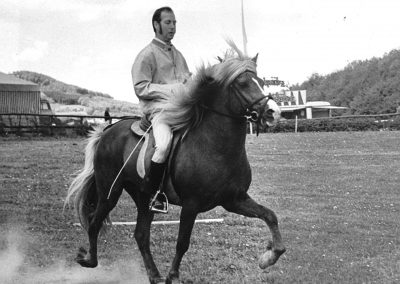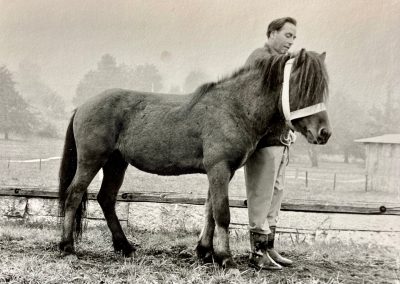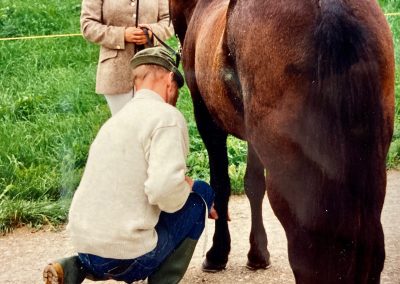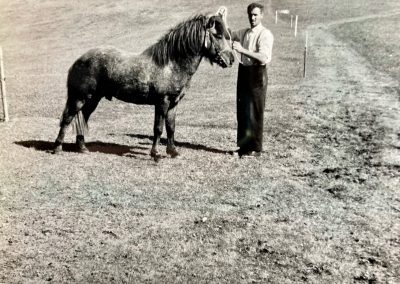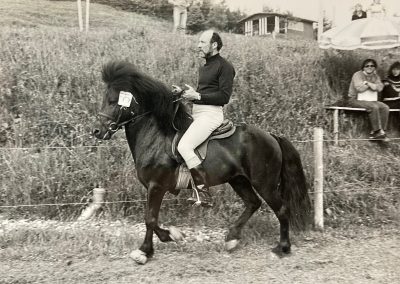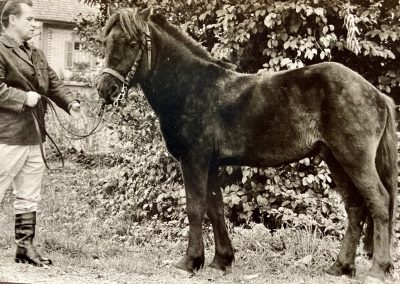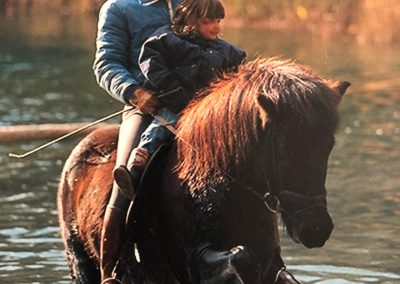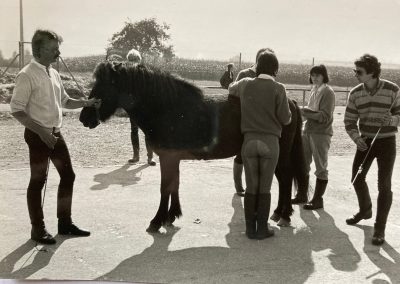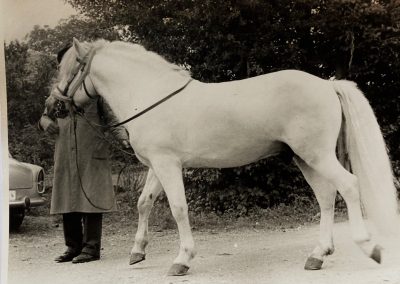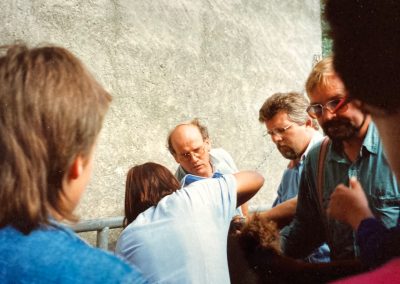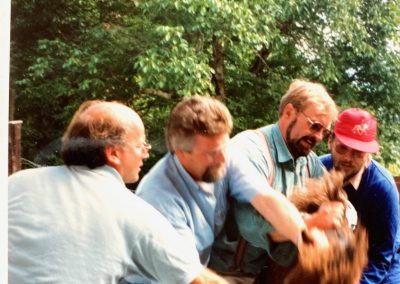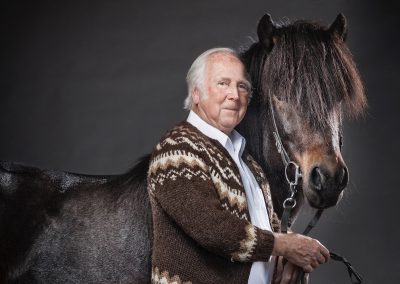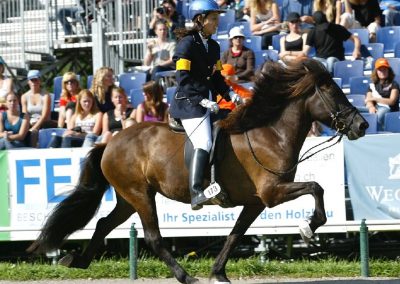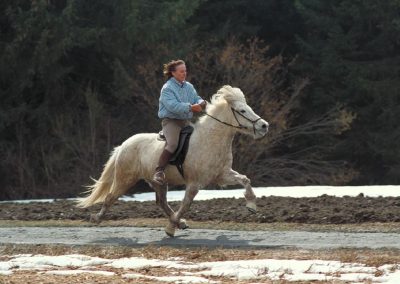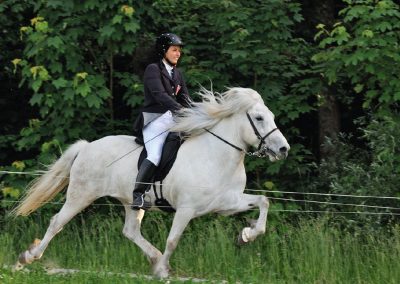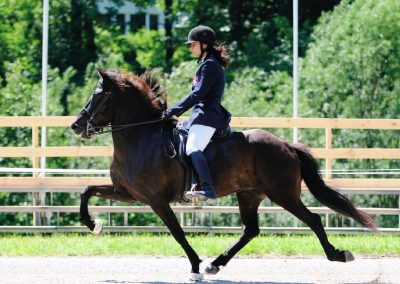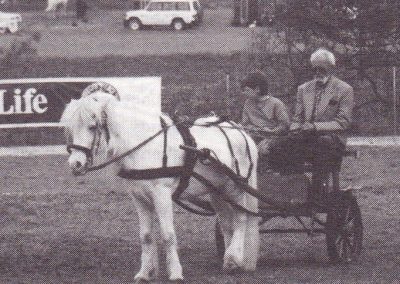WF in Switzerland
From the handwritten stud book to WorldFengur
The first official pedigree for an Icelandic horse born in Switzerland was made in 1968 by a young veterinarian named Ewald Isenbügel. He was head of the then Breeding Department /Section Icelandic Horses. As the breeding aims of the Icelandic horses differed greatly from those of the other small horse breeds, the independent Swiss Icelandic Horse Breeders’ Association was founded.
The Icelandic Horse Association Switzerland (IPV CH) emerged from this in 1972. Since then, the Breeding Commission (ZK) of the IPV CH has been responsible for all breeding matters.
From the beginning, the 100% pure breeding of Icelandic horses and the consequent adherence to the guidelines of the mother country Iceland were the most important points. The fact that these were followed without discussion is a great merit of Ewald Isenbügel. However, he was not only committed to the breeding of Icelandic horses in Switzerland, but also played a decisive role in the foundation of the FEIF and was its first President.
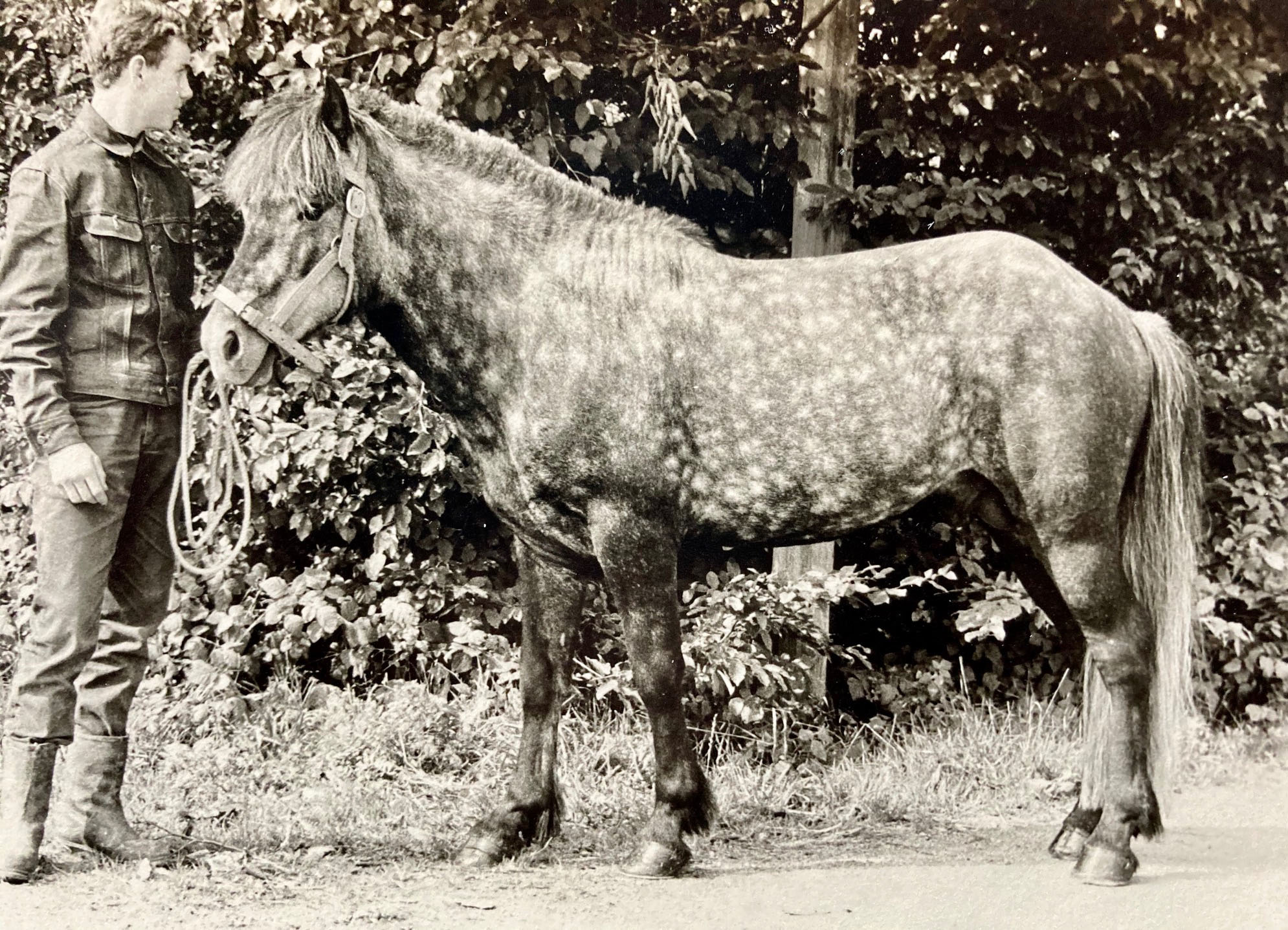
Stjarni frá Framnesi (IS1962185965) sire Grani 452 frá Sauðárkróki with his owner Rolf Sommerderhalder at a breeding show in 1967

„Riding judge with good balance“ – Heini Schneider with Hrafnson von Vordemwald [CH1962100001] at a breeding show in 1967
During my studies to become a veterinarian, as an Icelandic horse owner and successful sport rider, he was able to awaken my interest in Icelandic horse breeding. Under his presidency, I was able to gain my first experience as a member of the Breeding Commission. As a result of a sudden vacancy, I was elected provisional chair of the Breeding Commission in 1983. This interim solution lasted until 2017. To continue the breeding work in the spirit of Ewald and to be open for new things was one of my great concerns over the many years.
An example of this is the following, initially rather utopian undertaking. I had frequent family and professional contact with Ewald, who was by then a veterinarian at Zurich Zoo and also my brother-in-law. From him I learned about the new method of identifying animals by marking them with a microchip. At that time, this method was used in the USA, especially for cattle, and more recently for the animals at Zurich Zoo. We were fascinated by the idea that this type of marking could also be used on Icelandic horses. Together we were able to convince the board of IPV CH of this innovative idea.
As there were no guidelines at that time as to where and in which way animals, especially horses, should be marked with a microchip, Ewald and I had to define it. Based on the marking of zoo animals, we decided that it should be done under the skin on the middle of the left neck.
From 1993, all Icelandic horse foals born in Switzerland were compulsorily marked with a microchip. In the beginning there was some resistance in Switzerland. On the one hand because of health concerns regarding the horses, on the other hand because one did not want to believe that this would have a future.
Also on the occasion of the international FEIF Breeding Leader meeting, my idea of microchipping Icelandic horses met with little interest.
As we all know, it just took some time. Today, microchip marking is the marking of choice for most horses worldwide.

Young horse inspection at Gestüt Schnabelsberg Bennau/Einsiedel, 1969
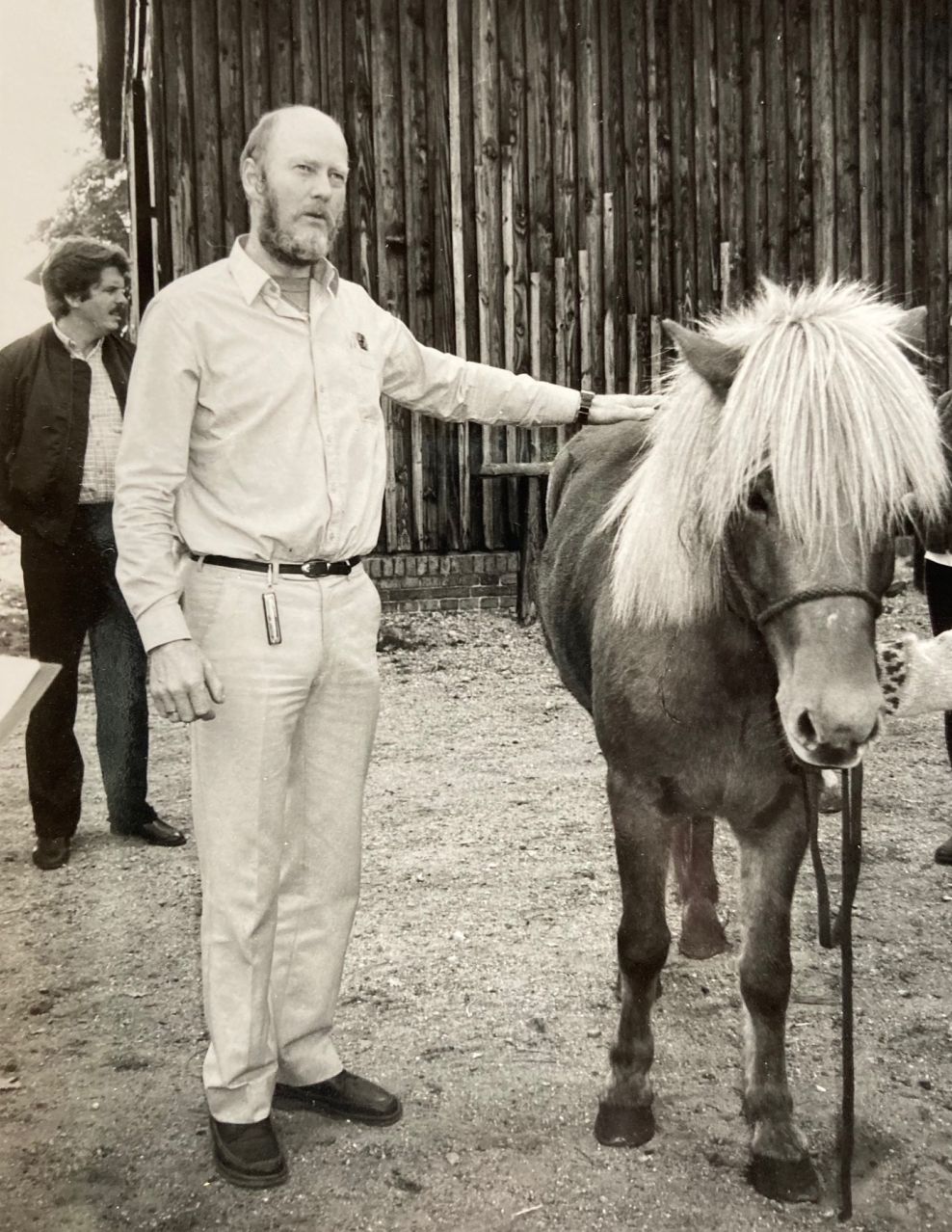
Friðþjófur Þorkelsson, breeding judge and photographer from Iceland during a breeding seminar helt in Switzerland 1979
WorldFengur, how it all began
In the 90’s digitalisation gained more and more importance also in the studbook of Icelandic horses. It soon became clear to me that the studbook of the IPV CH would also have to be converted to this system. But how, because for the small number of Icelandic horses born in Switzerland, going it alone was not a sensible way. Through my sister Marietta, who lives in Iceland, I learned that in Iceland they were using a digital studbook called Fengur for studbook work.
All horses in Iceland that had been assessed for breeding were entered in this database. It quickly became clear to me that only an affiliation with Fengur would make sense for Switzerland. A merger with other countries that were also pushing digitalisation was out of the question for us for various reasons. Jón Baldur Lorange, the main person responsible for Fengur, was understandably not very interested in my enquiry. He was of the opinion that the studbook of IPV CH was a problem we had to solve.
So I asked IT specialists and Icelandic horse studbooks in neighbouring countries again whether a cooperation would be possible. Unfortunately, the result was unsatisfactory and therefore the only option was to contact Jón Baldur again.
My request to him was now more concrete. The Swiss breeding horses should be registered separately in Fengur. My argument was that the very small Swiss stud book only made sense in connection with the stud book of the mother country. Perhaps other countries, especially smaller ones, would be interested in joining the Icelandic stud book.
At the beginning I had the feeling that my wish met with little interest and after several inquiries, my hope that a cooperation might be possible faded.
I was all the more delighted when the news came that not only the horses of the Swiss stud book for Icelandic horses, but all horses were to be included in a worldwide stud book under the responsibility and management of the mother country Iceland. In the year 2000, the worldwide studbook for Icelandic horses went online under the name “Worldfengur”.
At the beginning, the new programme only included the horses registered in the old Fengur programme. The aim was to register all Icelandic horses as soon as possible. Except for Germany, where it took a little bit longer, all FEIF member countries joined WorldFengur very quickly. To ensure that the registrations of all offspring countries were uniform, WorldFengur and FEIF created a set of rules that had to be followed exactly by everyone.
The most important part of this set of rules was the 100% purity of the horses that are officially recognised as Icelandic horses. This is only granted if the pedigree of all horses can be traced back to the generation born in Iceland. A uniform numbering system for the horses, owners, breeding farms etc. is very important. The country abbreviation, the year of birth and the sex of the horses are mandatory, as well as the number of freely available letters or numbers. For a clear process of the registrations in WF, only one club/association (FEIF member) is allowed per country, which can appoint one or more registrars.
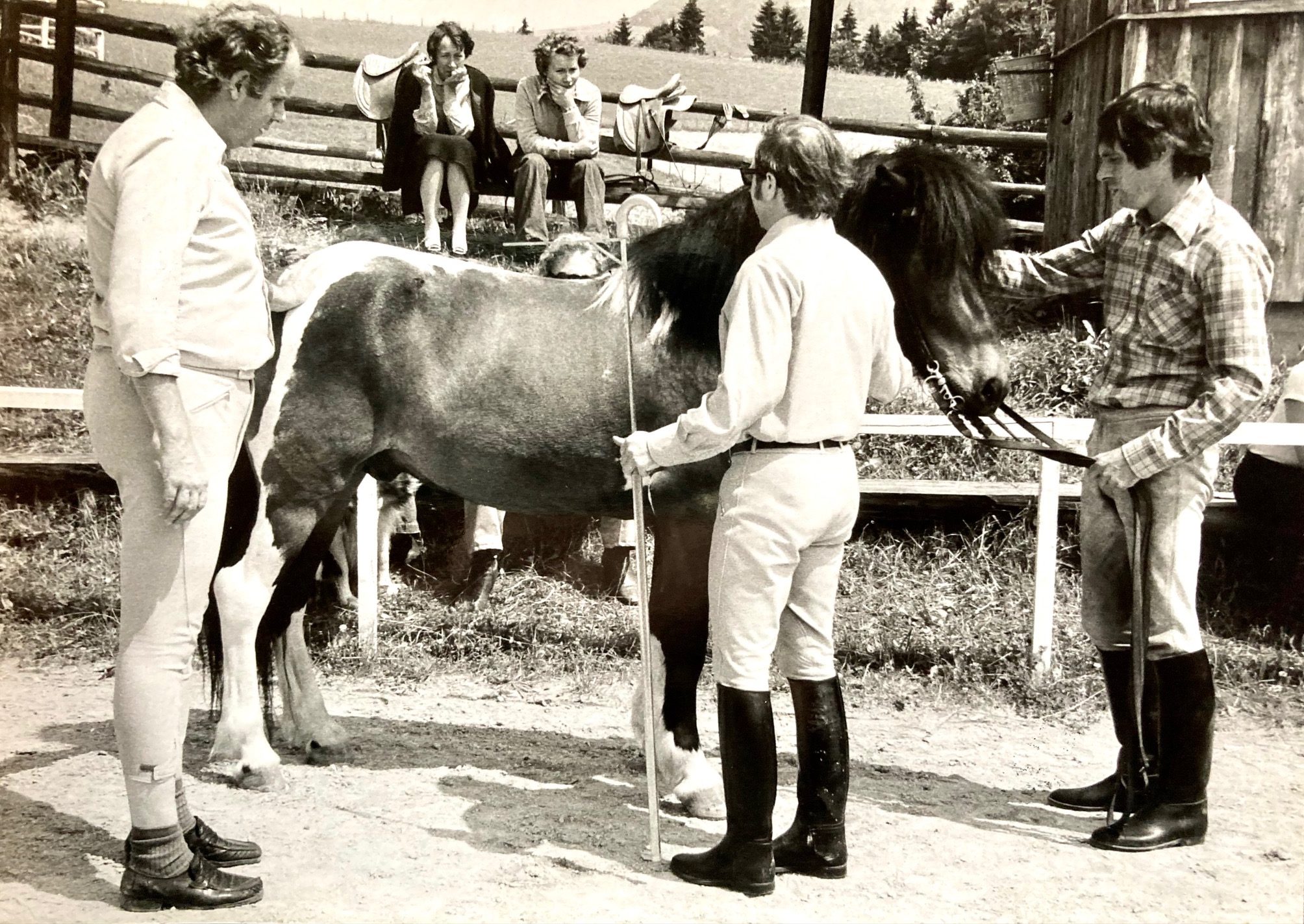
Günther Timmel, Ewald Isenbügel, Jürg Indermaur at a breeding show in Bennau, Switzerland in year 1973
For IPV CH, I was the only registrar for a long time. For the freely available letters or numbers, a simple, comprehensible system had to be found for our country. For the horses, the numbers of the pedigrees issued up to that time suggested themselves. This consecutive numbering was retained.

Max Indermauer with a young horse from Schnabelsberg in 1969
Sequential numbering was also necessary for the personal ID and the origin of the horses (farm names). To make it a little clearer, the first digit of the postcode of the current place of residence or breeding farm was added after the CH.
The registration of horses born in the country was a very time-consuming task. Just as in many other countries, a large proportion of the horses born in Switzerland were descended from horses that had not been bred in Iceland. The rule was that horses born outside Iceland could only be registered in WF if the ancestors born in Iceland had been registered before. Fortunately, in most of my cases this only applied to horses from Iceland, which made everything a bit easier.
A great help for me and certainly for many others was Hallveig, the chief registrar of Iceland. It was great to work with her, she was always friendly, reliable and helpful. I am very sad that she had to leave us so early. Thank you for everything Hallveig, I will always remember you fondly.
A great relief during the registration was that the studbook office in Switzerland had archived copies of the parents of the CH foals from the beginning. This made it relatively easy to find and register the horses in Iceland. From the year 1975 until the end of my term of office, all horses born in Switzerland were registered by , with the older ones I limited myself to those relevant for breeding.
Swiss specialities
As a quadrilingual country, Switzerland required several adaptations from WorldFengur regarding the preposition “von” . This had to be adapted to the French, Italian and Raetoromanic languages. It required some efforts as the preposition changes depending on the type of farm names.
Since the beginning of Icelandic horse breeding in Switzerland, Ewald has advocated that only Icelandic horse names should be used, and since 1970, this has been laid down in our regulations. From 1998 onwards, only two languages may be used for the horse names and the corresponding designation of origin. Also, the Icelandic frá may not be used for horses born in Switzerland. If a breeder wishes to use the same designation of origin for horses born in Switzerland and in Iceland, they are distinguished by the Icelandic or a corresponding preposition in use in Switzerland.
From 2008, all equidae (horses, donkeys, mules) born in Switzerland must be registered in a central database. They all receive a UELN , consisting of the country-specific numbers, followed by a consecutive, arbitrary number. Fortunately, through an agreement between the respective agricultural offices of Iceland and Switzerland, the same numbers are used for the UELN in the back as for the FEIF-ID.
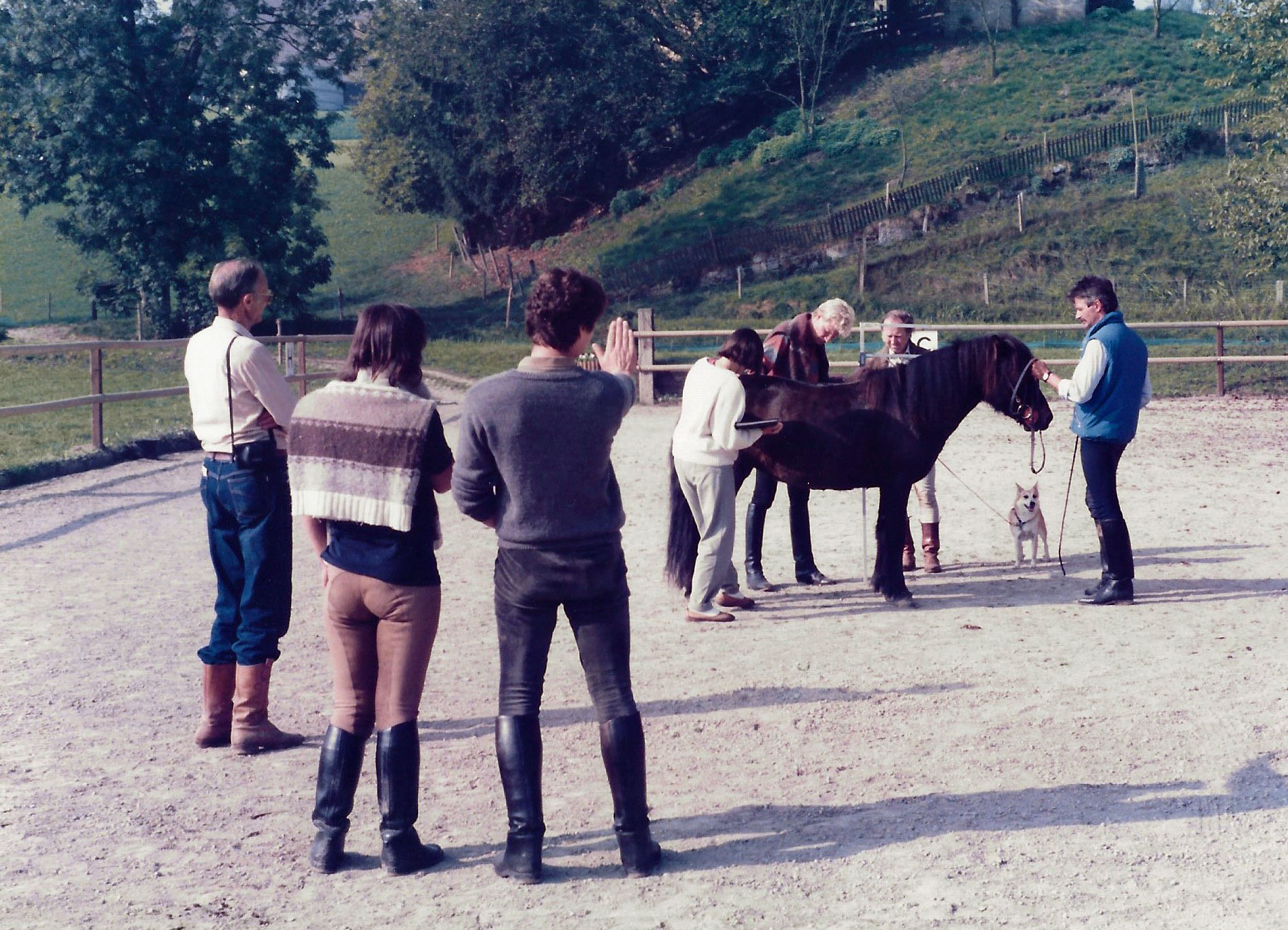
Breeding Evaluation in 1990 at Hestar-Hof, Reussegg in Sins, Switzerland
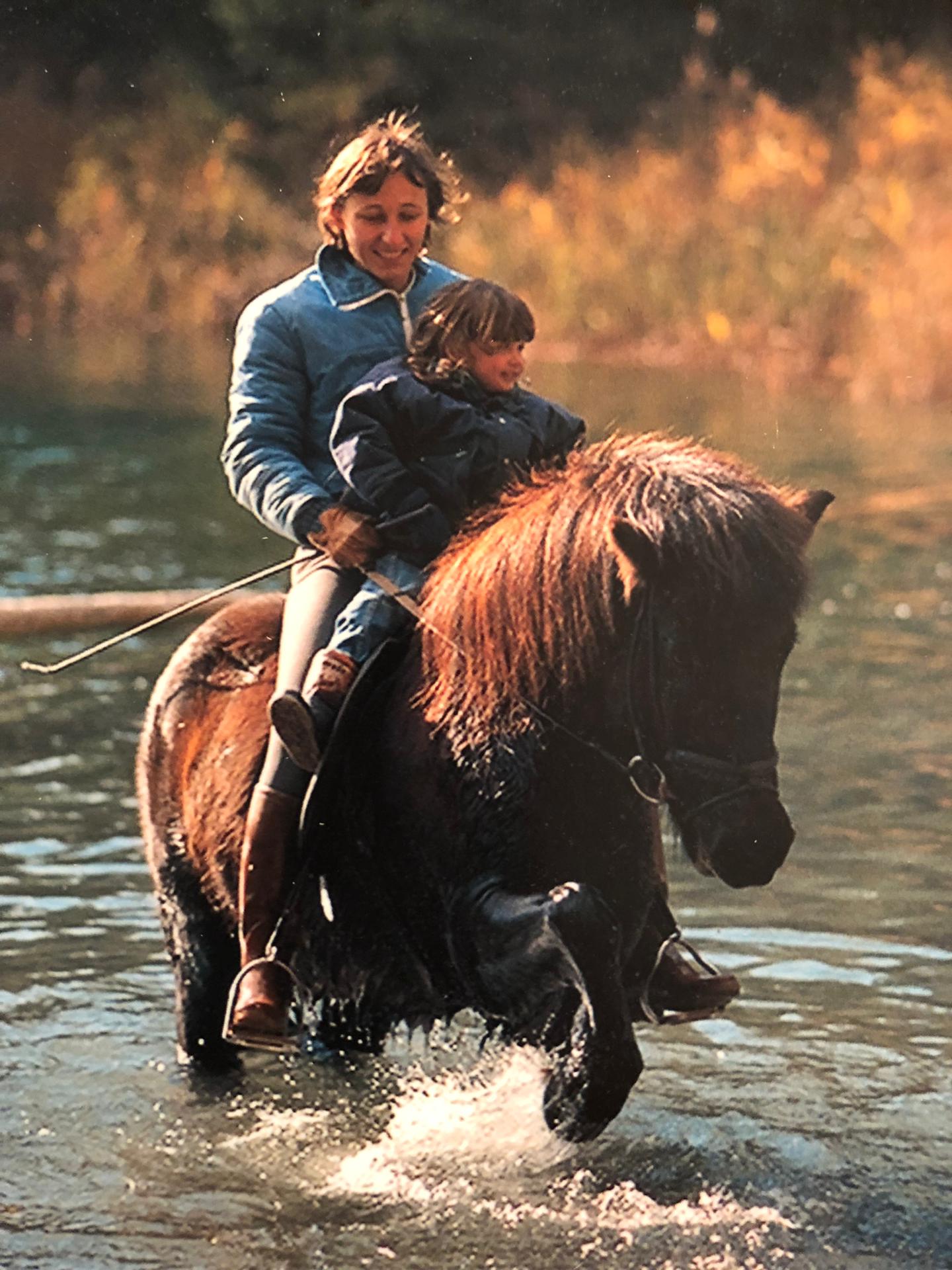
Barla Barandun and little Flurina on Muskur vom Lindenhof [CH1975101314], Crestasee (near Auas Sparsas)
Text: Barla Barandun
Photos: Ewald Isenbügel, Georg Barandun
Thank you
I would like to thank everyone who supported me during my time as Breeding Director of IPV CH. A very big thank you goes to my husband and my children, who had a lot of understanding for the many hours and days I spent as Breeding Director of IPV CH and as Registrar.
Another big thank you goes to Jón Baldur and his crew who created a great and informative database. The World Stud Book for Icelandic horses is a great database. To the best of my knowledge, there is no database for any breed of horse comparable to WorldFengur.
Through the worldwide networking via WorldFengur and the long-standing cooperation with FEIF, it has been possible to harmonise all activities concerning breeding evaluation, breeding objective and international sport tests. The performance of horses in all countries is thus comparable. Probably the most important consequence of the equal assessment in Iceland and all other countries is that the Icelandic horses have developed in the same way all over the world, this with the variance usual in the breed. This means that there is no danger of the Icelandic horse breed splitting up into individual, clearly differing subgroups, as is known from other horse breeds.
I would like to make special mention of my sister Marietta, who drew my attention to the Fengur database which led to the contact with Jón Baldur. By chance, Marietta and her husband Pétur Behrens were invited by the Icelandic breeding consultant Ágúst Sigurðsson at that time. Among other things, they talked about the still nameless worldwide database that was in the process of being created. It should be given a catchy name. Marietta’s suggestion was very unspectacular, but it met with approval. The word “World” should simply be added to the existing name of the old Icelandic studbook. WorldFengur was completed by a very catchy logo, impressive in its simplicity, drawn by the Icelandic painter and horseman Petúr Behrens.
The events described above are some of my personal memories of an intense and exciting time as Breeding Director of the Swiss Icelandic Horse Association.
Hrappur fra Gardsauka, owner Ullu Becker, rider Ewald Isenbügel, European Championships 1968, Aegidienberg
1181
Muskur vom Lindenhof [CH1975101314], successful Swiss championand two-times World Championships participant, picture 1978
Body measurements played an important role at breeding shows in Switzerland already in 1977 (Hestar-Hof, Reussegg, in Sins)
One of the most successful breeding mares in Switzerland Kría d´Auas Sparsas [CH1985201595] with 3 offspring over 8 and 3 with almost 8 in total score, rider and breeder Barla Barandun (photo taken in 1992)
Svana d’Auas Sparsas [CH2000202106] with a total score of 8.11 at the breeding show in Brunnadern in 2011
Fluga d´Auas Sparsas (CH1998202051) (ridden by Flurina Barandun) bred by Barla & Georg Barandun at the World Championships in Switzerland in 2009, where she got the second highest total score in the class of mares 7+ years
